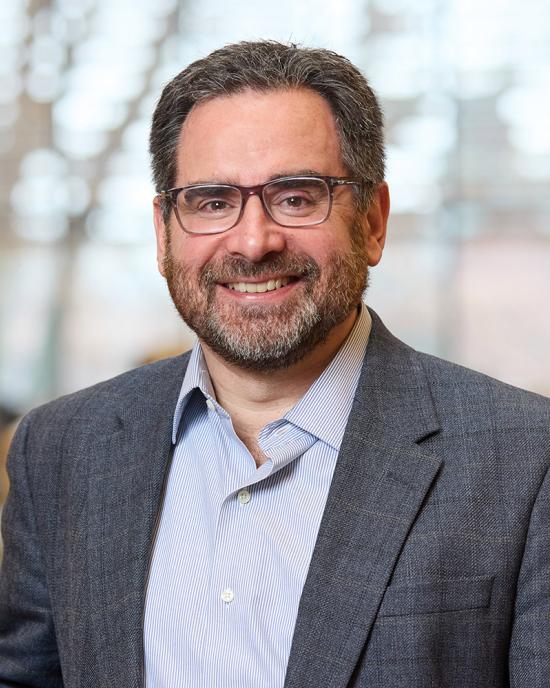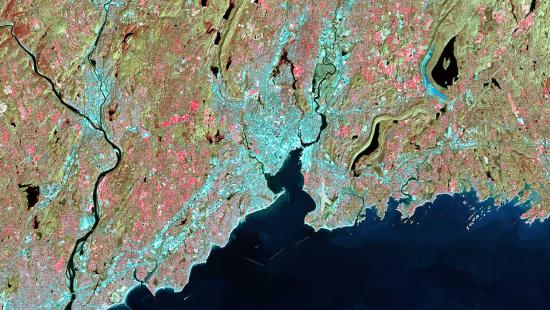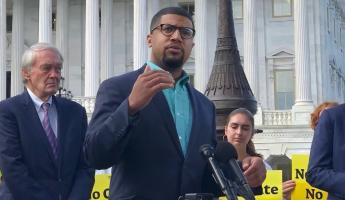In the recently decided West Virginia v. Environmental Protection Agency, the U.S. Supreme Court limited the EPA’s authority to regulate greenhouse gas emissions from existing power plants. The 6-3 decision rested on the “major questions” doctrine, which requires Congress to authorize in plain and direct language any actions by an administrative agency that have a major economic or political impact on the country. Many environmental advocates and scholars say the court’s decision will make it much more difficult for President Biden to meet the goal of a 50% reduction in U.S. greenhouse gas pollution from 2005 levels in 2030 — with consequences that potentially reach far beyond the EPA and Clean Air Act. We spoke with Yale School of the Environment Lecturer Robert Klee '99 MEM, '04 JD, '05 PhD, former commissioner of Connecticut’s Department of Energy and Environmental Protection (DEEP), about what avenues are still open to the EPA to regulate greenhouse gas emissions and how the ruling may affect climate goals.
How much does the Supreme Court’s decision curtail the EPA’s ability to regulate greenhouse gas emissions?
When you look at this decision, yes, it’s narrowly focused on this question of greenhouse gases, and it’s even more narrowly related to a specific section of the Clean Air Act, but I think it actually could have much wider implications. The court said via the “major questions” doctrine that Congress has to clearly authorize administrative agency action if that agency’s actions or regulations will have a major impact on the economy and society, which, firstly, is throwing it to a body that seems incapable of taking any action on climate right now. Remember our major environmental laws — with the exception of one [Toxic Substances Control Act] — have not been significantly updated by Congress in well over 30 years.
Secondly, it’s a good rule of thumb that any new ruling that the EPA issues on any topic — air, water, waste, you name it, is challenged by somebody. It’s often challenged by regulated industry that feels the EPA has gone too far, and sometimes it’s challenged by environmental groups saying it didn’t go far enough. “Significant impact” is also pretty subjective, and, frankly, everything the EPA does has a significant impact. It was created because the alternative was free rein for polluters, and we didn’t like the rivers on fire and soot on our cars that caused. So, I’m afraid this claim that a regulation is a “major question” and needs clearer language is now going to be part of every challenge to rulemaking. That adds further delay and sets up the courts, and ultimately, the Supreme Court, who are not environmental experts, as de facto deciders on climate policy — deciding what EPA regulation falls into the “major question” category. I imagine it could have a chilling effect on the EPA’s ability to perform its function.
What options does the EPA still have to try to reduce emissions and advance the transition to clean energy?
The court’s decision focuses on a very specific section of the Clean Air Act, Section 111. West Virginia argued that the EPA has the authority only to regulate pollution within the “fenceline” of stationary sources, such as smokestacks. The majority on the court basically sided with them, expressing concern about the EPA dictating which power plants were going to run and which weren’t as something outside of EPA’s core functions, stating that those energy dispatch decisions were better left to state utility regulators. The EPA can still do other things to regulate emissions that fall under the “fenceline,” such as imposing smokestack scrubber-type of technologies on the emission of greenhouse gases, or requirements that individual power plants meet certain efficiency standards. The EPA could theoretically even say, and the dissenting opinion sort of mentions this, all existing sources have to have carbon capture and storage. Though that would likely be challenged because that technology is very expensive and has yet to be proven technologically viable. So, there is some potential there “within the fenceline” for the EPA to come up with something that meets the Supreme Court’s test.
The EPA also theoretically has other parts of the Clean Air Act to utilize, and many scholars and environmental advocates point to Section 115 that was written to deal with international pollution. The scenario Congress envisioned was down in Texas where pollution from U.S.-based emissions blows over into nearby communities in Mexico. The EPA can regulate when that domestic pollution is harming other countries. You could read that language broadly to say that greenhouse gases wherever they’re emitted go into the atmosphere and cause harm everywhere around the globe. However, it hasn’t been tried yet, and, frankly, I would be worried it would fall to this same type of major questions doctrine challenge.
Then there’s all the other ways the EPA regulates. They regulate all the time on nitrogen oxide, sulfur dioxide, ozone, particulate matter. The EPA also regulates on air toxics particularly for coal-fired power plants that have considerable mercury emissions associated with them. The EPA could tighten the vices on all those other traditional pollutants that would make, particularly coal-fired generation, less economically viable. And there have been hints even prior to this decision that the EPA was going to follow more of an all-of-the-above strategy rather than hanging their hat on Section 111.
Newsletter
Biweekly, we highlight three news and research stories about the work we’re doing at Yale School of the Environment.
It’s commonly argued that, regardless of regulation, industry will transition away from coal and other fossil fuels to remain profitable, but will that happen fast enough when the window is rapidly closing to avoid the worst impacts of climate change?
That’s a complex question, and there’s no simple predictive answer. Innovation in clean energy is low-cost, and it has already allowed for quite a bit of transition. I also think there is a real commitment to decarbonization from many industry leaders and an acknowledgment that it’s the only path forward. But, on the other hand, if you look at the number of utilities in the country that are achieving the level of year-over-year de-carbonization that we would need to allow us to stave off the worst impacts of climate change, it’s probably only dozens out of the thousands of utilities large and small nationwide. There are many reasons for that, but one of them is that in some cases our utilities are structured so that there is no incentive to transition away from longstanding but outdated assets like coal-fired power plants. So that’s why regulation that utilizes some combination of incentives and punitive measures is also necessary to achieve the type of holistic results we need in the timeframe we need them.
Speaking of results, how much more difficult will this ruling make it for President Biden to meet the goal of a 50% reduction in U.S. greenhouse gas pollution from 2005 levels in 2030?
I think when the Build Back Better Act, which included a lot of investments in clean energy and tax incentives to drive that transition to clean energy, failed to pass in a closely divided Senate, there was a pivot to say, “okay, but we can still do a lot with the EPA and their regulatory powers.” Now, we are left in this kind of gray area — without a robust regulatory response or any clear pathway. This kind of uncertainty creates additional challenge because the regulatory community, businesses, utilities — they largely want that clarity. They want to be able to plan in 3-,5-, 10-year time scales in terms of the capital investments they’re making. It was due to that desire for clarity and certainty that, in this specific Supreme Court case, quite a few utilities came in on the side of the EPA. So, overall, I’d say not knowing what the federal government is going to do, or be able to do, will make it much more challenging — especially with 2030 being only seven and a half years away.
But I will add that what continues to give me hope despite the court’s decision and the uncertainty in the federal government is that we continue to see leadership on climate change on the state and city levels and at corporations and institutions like Yale — all of which have plenty of tools at their disposal to decarbonize and a willingness to do so. It would be nice to have the federal government along with us, but it seems like they keep having to take a more circuitous route. But all of our states, cities, companies, and institutions — we’re going to keep moving in that direction.





